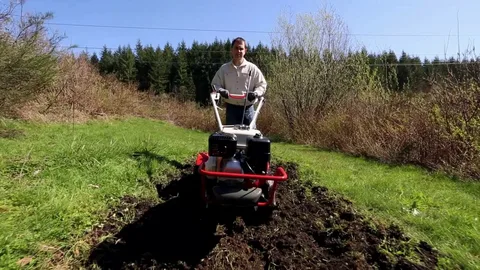A garden tiller is an essential tool for preparing your soil, making gardening easier and more efficient. However, like any piece of equipment, it can sometimes develop problems that slow down your work or bring it to a halt. Understanding how to approach garden tiller troubleshooting: fixing common issues can save you time, money, and frustration. In this article, we’ll explore the most frequent problems that gardeners encounter with their tillers and provide practical solutions to get them back in action.
Common Garden Tiller Problems
Before diving into solutions, it’s important to identify the typical issues garden tillers face. These include:
- Engine won’t start
- Tiller won’t move or engage properly
- Poor soil penetration or uneven tilling
- Excessive vibration or unusual noises
Knowing these common problems helps you better diagnose your tiller’s condition.
Engine Won’t Start
One of the most frustrating problems is when the engine fails to start. Here’s how to troubleshoot this issue:
- Check the Fuel: Ensure your tiller has fresh gasoline. Old or contaminated fuel can prevent the engine from starting.
- Inspect the Spark Plug: A dirty or faulty spark plug is a common cause. Remove it, clean it, or replace it if necessary.
- Air Filter Condition: A clogged air filter restricts airflow, making it hard for the engine to start. Clean or replace the filter regularly.
- Choke Position: Make sure the choke is set correctly when starting the engine, especially in cold weather.
These simple steps often resolve starting issues during garden tiller troubleshooting: fixing common issues.
Tiller Won’t Move or Engage Properly
If your tiller’s engine runs but the tines won’t spin or the machine won’t move forward, check the following:
- Drive Belt: Inspect the belt for wear or damage. Replace it if it’s broken or loose.
- Transmission or Clutch: These components may require adjustment or repair. Consult your tiller’s manual for specific guidance.
- Throttle and Controls: Ensure that the controls are functioning correctly and fully engaged.
Addressing these points can restore proper movement and function.
Poor Soil Penetration or Uneven Tilling
Sometimes, the tiller might struggle to break up soil effectively or till unevenly. This can be caused by:
- Dull or Damaged Tines: Sharpen or replace tines to improve soil penetration.
- Incorrect Tilling Depth: Adjust the depth settings according to soil conditions and gardening needs.
- Soil Condition: Very hard or dry soil may require pre-watering or multiple passes.
These fixes are part of essential garden tiller troubleshooting: fixing common issues for optimal performance.
Excessive Vibration or Unusual Noises
Unusual sounds or excessive vibration can indicate mechanical problems such as:
- Loose parts or bolts
- Worn bearings or damaged gears
- Debris stuck in the tines or drive system
Regular maintenance and careful inspection can prevent these problems from escalating.
Conclusion
Mastering garden tiller troubleshooting: fixing common issues ensures your equipment runs smoothly throughout the gardening season. From engine problems to uneven tilling, understanding the basics of diagnosing and repairing common faults can save time and extend the life of your tiller. Regular maintenance and prompt attention to small issues keep your garden ready for planting and thriving.


